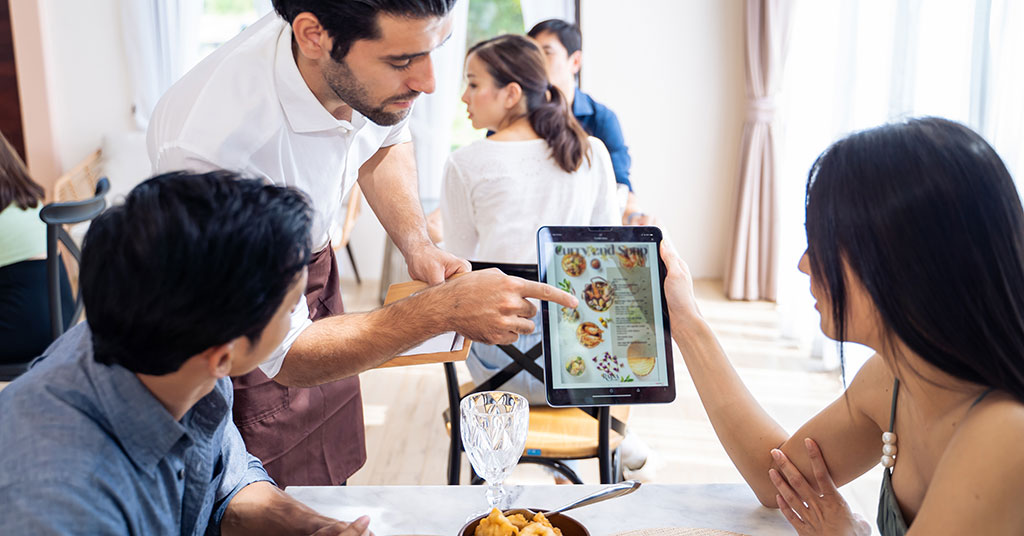Leveraging Technology To Elevate Customer Experience in the Restaurant Industry

Restaurant brands today must continually innovate to stay ahead. One of the most significant ways to do this is by integrating new technologies that enhance the overall customer experience. The restaurant industry, particularly in the fast-casual segment, has seen rapid technological advancements that cater to the ever-increasing demand for speed, convenience, and personalization.
As chief marketing officer of Teriyaki Madness, I have had the opportunity to oversee the implementation of new technologies that have transformed how we engage with our customers. While our brand’s specific innovations are tailored to our unique customer base, the broader trends in the industry highlight the importance of technology in shaping customer experience across the board.
Shift toward digital engagement
The restaurant industry has been undergoing a digital transformation for years, but the pandemic accelerated this shift. Consumers now expect a seamless digital experience, from ordering their meals online to receiving them at their doorstep or curbside. For restaurant brands, this means investing in a robust tech stack that supports a user-friendly mobile app, efficient order processing, and real-time tracking capabilities.
A key element of improving customer experience through technology is understanding that it’s not just about adopting the latest tools but about integrating them in ways that genuinely enhance the customer journey. For instance, using location-based services can significantly reduce wait times while personalized marketing messages can drive repeat business.
Optimizing convenience with technology
Convenience is king in today’s market, and technology plays a pivotal role in delivering it. The integration of technologies like mobile ordering and curbside pickup systems are becoming the norm rather than the exception. But to truly stand out, brands must push the envelope further.
For example, consider the implementation of real-time tracking systems. By leveraging GPS and location-based technology, restaurants can offer customers the ability to track their orders from preparation to pickup. This not only reduces anxiety around waiting times but also allows restaurants to better manage their operations, ensuring that food is fresh and ready precisely when the customer arrives.
Moreover, integrating voice-activated ordering systems and AI-driven customer service can provide an even smoother experience. These technologies can handle high volumes of orders with ease, minimize errors, and offer a more personalized interaction, all of which contribute to customer satisfaction.
The role of data in enhancing customer experience
Data is another crucial component in the technological landscape of the restaurant industry. With every interaction, customers generate valuable data that, when analyzed correctly, can offer deep insights into their preferences and behaviors.
By harnessing this data, restaurant brands can tailor their offerings to meet specific customer needs, predict demand and even personalize marketing efforts. This level of customization makes the customer feel valued while encouraging loyalty and repeat business.
For example, by using data analytics, a brand can identify the most popular items at specific times of the day or year and adjust its marketing strategies accordingly. Additionally, data can inform the development of loyalty programs that reward customers based on their purchasing habits, further enhancing their experience.
Balancing innovation with human touch
While technology is essential for improving customer experience, it’s important to remember that it should complement, not replace, the human element. Customers still value the personal touch, and technology should be used to enhance rather than diminish these interactions.
For instance, technology can streamline operations in the kitchen, allowing staff to focus more on delivering excellent service. Automated systems can handle routine tasks, freeing up employees to engage more meaningfully with customers. This balance of technology and human interaction creates a more holistic customer experience that is both efficient and personable.
Looking ahead
As technology continues to evolve, so too will the opportunities to enhance customer experience in the restaurant industry. The key for restaurant brands will be to stay ahead of the curve by adopting these technologies and integrating them in ways that truly resonate with their customers.
Ultimately, the goal is to create a seamless, enjoyable experience that keeps customers coming back. As a strategy, leveraging technology thoughtfully and strategically can help restaurant brands consistently exceed customer expectations.
Jodi Boyce is the chief marketing officer of Teriyaki Madness.
Share this Feature
Recommended Reading:
| ADVERTISE | SPONSORED CONTENT |
FRANCHISE TOPICS
- Multi-Unit Franchising
- Get Started in Franchising
- Franchise Growth
- Franchise Operations
- Open New Units
- Franchise Leadership
- Franchise Marketing
- Technology
- Franchise Law
- Franchise Awards
- Franchise Rankings
- Franchise Trends
- Franchise Development
- Featured Franchise Stories
| ADVERTISE | SPONSORED CONTENT |






 The franchise opportunities listed above are not related to or endorsed by Franchising.com or Franchise Update Media Group. We are not engaged in, supporting, or endorsing any specific franchise, business opportunity, company or individual. No statement in this site is to be construed as a recommendation. We encourage prospective franchise buyers to perform extensive due diligence when considering a franchise opportunity.
The franchise opportunities listed above are not related to or endorsed by Franchising.com or Franchise Update Media Group. We are not engaged in, supporting, or endorsing any specific franchise, business opportunity, company or individual. No statement in this site is to be construed as a recommendation. We encourage prospective franchise buyers to perform extensive due diligence when considering a franchise opportunity.